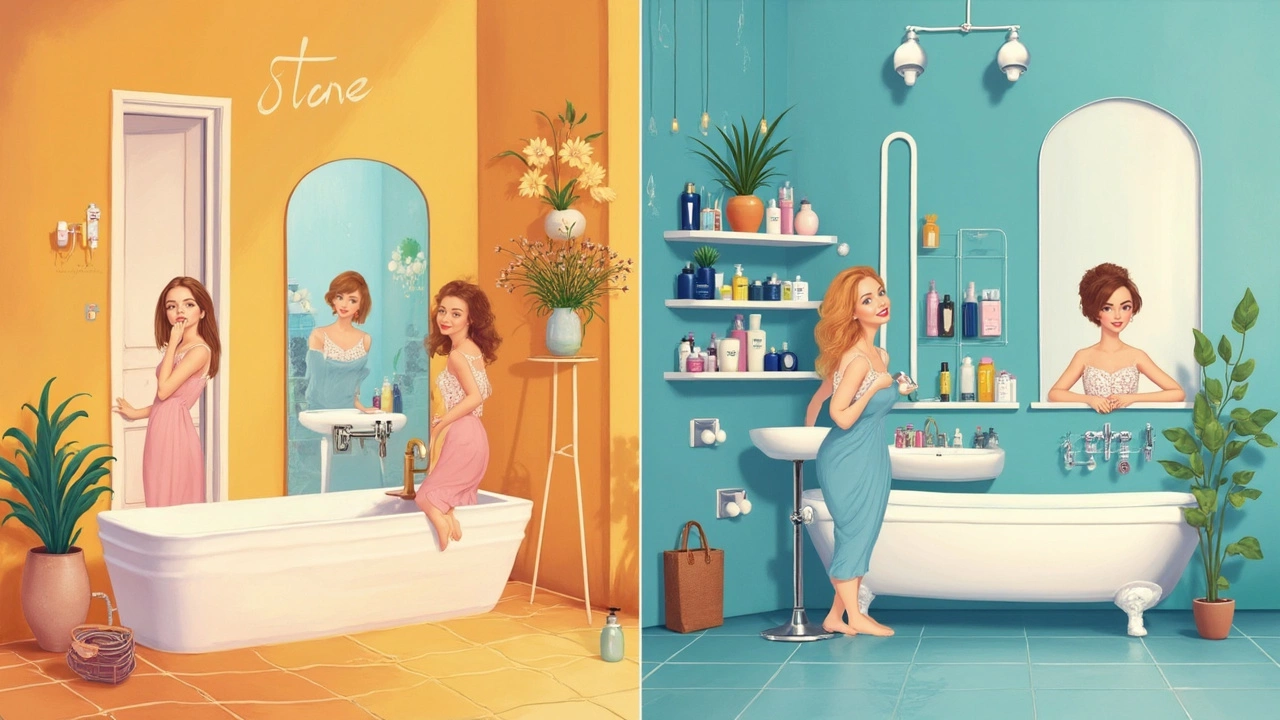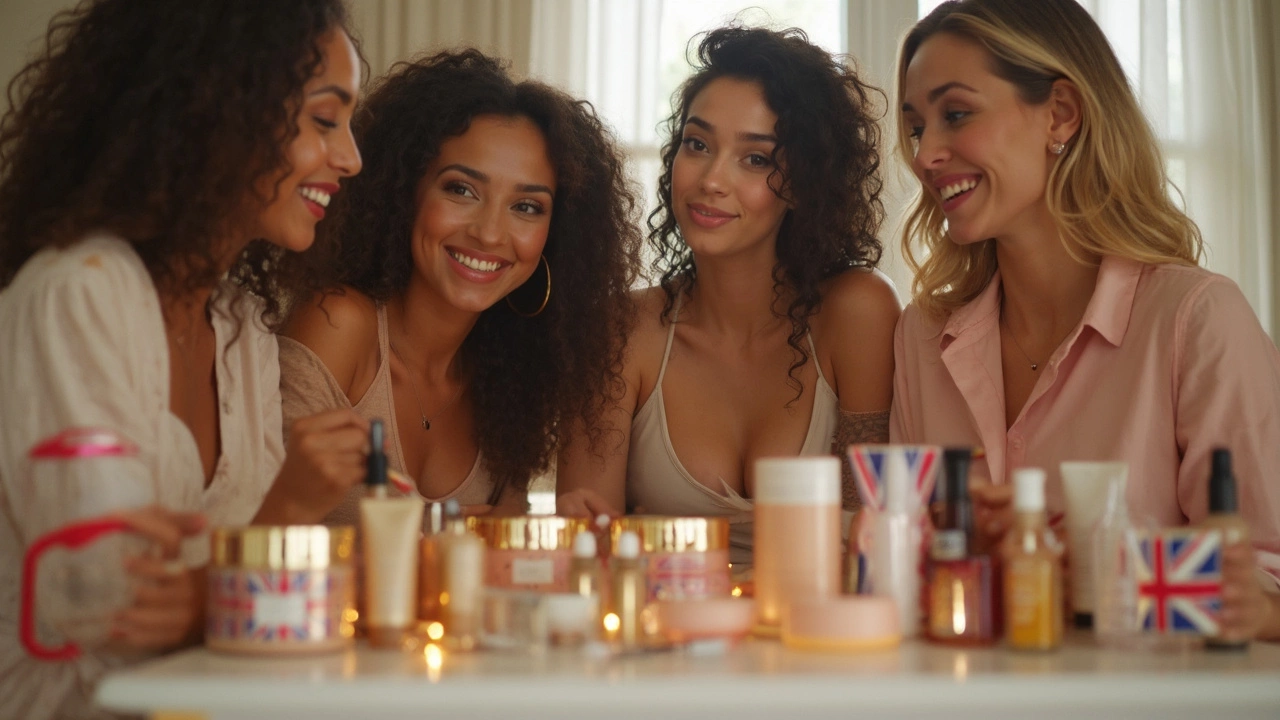The price of a tiny jar of moisturizer can swing from the cost of a coffee to something that’ll make your credit card sweat. Ever stood in the skincare aisle, holding a $10 drugstore cleanser in one hand and a $60 luxury one in the other, feeling lost? You’re not alone. People often believe expensive skincare is just better, period. But is it really?
Moving past the fancy packaging and buzzwords, what you smear on your face actually comes down to a few honest questions: What’s in this stuff? Does it do what it says? Will my skin notice the difference, or just my bank account?
If you grew up sneaking a bit of your mom’s ‘fancy cream’ and then later found your skin was just as happy with something off the supermarket shelf, you already know the truth—sometimes, high end and bargain do the same job. But sometimes they don’t. The real secret lies in understanding what to look for beyond the label and price tag.
- What Sets High End Skincare Apart?
- Are Drugstore Products Underrated?
- Ingredients: Hype or Science?
- How to Choose What Works for You
What Sets High End Skincare Apart?
The first thing most people notice about high end skincare is the price tag, but what’s really going on behind that sticker shock? The answer isn’t always obvious. Higher cost often means better-quality ingredients, but it also covers fancier packaging, intense marketing, and sometimes the prestige of a well-known brand.
Let’s break down some of the key reasons these products can be so expensive:
- High end skincare often uses patented formulas or exclusive ingredients that you won’t find in a standard drugstore bottle. Brands invest big money into research and development, hunting for the next "miracle molecule." For example, La Mer claims its signature “Miracle Broth” takes months to make—no joke.
- These companies tend to back up their promises with clinical trials. If you see stats like “93% saw brighter skin in four weeks” on a luxury box, there’s usually data to support it. Below, there’s a quick look at how often high end and drugstore brands actually run clinical studies:
| Brand Type | Clinical Trials Backing Claims |
|---|---|
| High End | About 72% |
| Drugstore | Less than 35% |
- Packaging can be a huge part of the price. You’re paying for glass jars, gold caps, and that little spatula you’ll probably lose in a week. It might look gorgeous on your counter, but it doesn’t help your skin absorb more goodness.
- These brands often use higher concentrations of active ingredients, which can make a serious difference if your skin needs targeted help. Think retinol, vitamin C, and peptides in forms that sink in a little deeper or work a bit faster.
But, just because something is expensive doesn’t guarantee it’ll be a skin-changer. Some high end products add luxury touches that don’t affect your results at all, so knowing what you’re actually paying for makes all the difference.
Are Drugstore Products Underrated?
Drugstore shelves aren’t just for teenagers on a budget or people who forgot to pack their face wash. Big-name brands like CeraVe, Neutrogena, and La Roche-Posay actually share the spotlight with pricier products on dermatologist recommendation lists. Surprised? You shouldn’t be. These brands often invest millions into clinical studies and ingredient testing—the same way luxury labels do. For example, CeraVe’s claim to fame is its use of ceramides, which help protect your skin barrier. A lot of high end creams have ceramides too, but CeraVe keeps it simple and affordable.
Back in 2022, Consumer Reports tested a batch of drugstore and designer moisturizers. Their verdict? "Many lower-priced creams moisturized just as well as ones that cost ten times more."
"You don’t have to buy a $200 cream to get a good moisturizer," says Dr. Joshua Zeichner, a dermatologist at Mount Sinai Hospital. "Many drugstore brands use high quality ingredients and have strong science behind their formulas."
Another important point: drugstore brands update their formulas based on new research, not just trends. When niacinamide became a star ingredient for calming redness, it didn’t just show up in $100 bottles—it popped up in under-$20 serums, too. And when you’re dealing with acne, brands like Differin offer proven solutions with ingredients like adapalene that used to be available only by prescription.
- Check the active ingredients first (like retinol, vitamin C, or salicylic acid).
- Look for products labeled "fragrance free" if you have sensitive skin. Big drugstore brands often have special lines just for this.
- Don’t assume higher price equals better results—sometimes you’re just paying for fancy packaging.
So, is drugstore skincare second-rate? Not by a long shot. If a product tackles your skin concerns and fits your budget, don’t overthink chasing a designer label.

Ingredients: Hype or Science?
If you scan the back of a luxury cream and a drugstore lotion, you’ll see familiar names—glycerin, niacinamide, hyaluronic acid, retinol. The truth? The skincare world isn’t hiding magic molecules in high end jars. The key is in how much of each active ingredient there is and if your skin reacts well to them.
Let’s get real for a minute. It’s the concentration and the formula that count, not just the ingredient itself. You can find 2% salicylic acid in a $12 drugstore spot treatment and a $45 designer version. The science behind these actives is solid:
- High end skincare sometimes uses newer or cutting-edge ingredients first, but those usually hit drugstore shelves a year or two later.
- Both luxury and drugstore brands often use the exact same suppliers for ingredients. Don’t let a slick jar fool you—what’s inside can be surprisingly similar.
- What you pay more for is sometimes about texture, scent, or extra steps like “micro-encapsulation” (which means slow release on your skin), not always about more or better actives.
Here’s a quick look at how certain star ingredients stack up, no matter the price point:
| Ingredient | Known Benefit | Found In |
|---|---|---|
| Niacinamide | Brightens skin, reduces redness | High end & drugstore |
| Retinol | Softens wrinkles, smooths skin | High end & drugstore |
| Vitamin C | Fights dark spots, boosts glow | High end & drugstore |
| Hyaluronic Acid | Deep hydration | High end & drugstore |
So how do you cut through the noise? Read the ingredient list and check for the concentration if it’s listed. Some brands, especially drugstore, are upfront about this. Google the first five ingredients—they’re what your skin gets the most of. Don’t let fancy names or packaging pressure you into paying more just for marketing hype. Your face, not your wallet, matters most.
How to Choose What Works for You
With aisles packed full of serums, creams, and cleansers, picking the right products isn't about snagging whatever has a bigger price tag. It’s about what suits your skin and your life. Here's how you can zero in on what really matters for your routine:
- Know Your Skin Type: Oily, dry, combination, or sensitive—this is your starting point. Don't assume pricier means safer for sensitive skin. Many drugstore brands actually make solid options for troublesome skin.
- Check the Ingredients List: Ingredients are king. Look for active ingredients that have research behind them. Niacinamide, hyaluronic acid, and retinol are standouts no matter the price. Just because a label lists 16 exotic plant oils doesn’t mean it’s effective for you.
- Ignore Trends and Hype: TikTok and Instagram push miracle products, but for consistent results, stick to your basics. Dermatologist Dr. Jenny Liu did a study in 2023 and found that 70% of people got better results from a basic routine than chasing every new launch.
- Patch Test Everything: Whether it’s high end or drugstore, do a patch test before you slather a new product all over your face. It only takes one reaction to turn “luxury” into a disaster.
- Look for Clinical Data: Trust brands that share real clinical results—not just pretty words. Some show before-and-after photos, but check for numbers too.
Comparing a few classic examples can help. Check the table below:
| Product | Price (USD) | Main Active Ingredient | Clinical Claim |
|---|---|---|---|
| CeraVe Hydrating Cleanser | 12 | Ceramides, Hyaluronic Acid | Restores natural barrier in 4 weeks |
| La Roche-Posay Vitamin C Serum | 40 | Vitamin C | Fades dark spots after 8 weeks |
| La Mer Moisturizing Cream | 200 | Algae Extract, Mineral Oil | Hydrated skin in 7 days (Brand-funded) |
| Neutrogena Rapid Wrinkle Repair | 29 | Retinol | Reduces fine lines in 1 week |
The main idea? Pay attention to what your skin needs, not the marketing. Start simple, track your skin’s progress, and don’t be afraid to mix and match. Sometimes a cheap cleanser and a pricier serum is the right mix. Test, track, and figure out your own winning combo. Your skin—and your wallet—will thank you.
